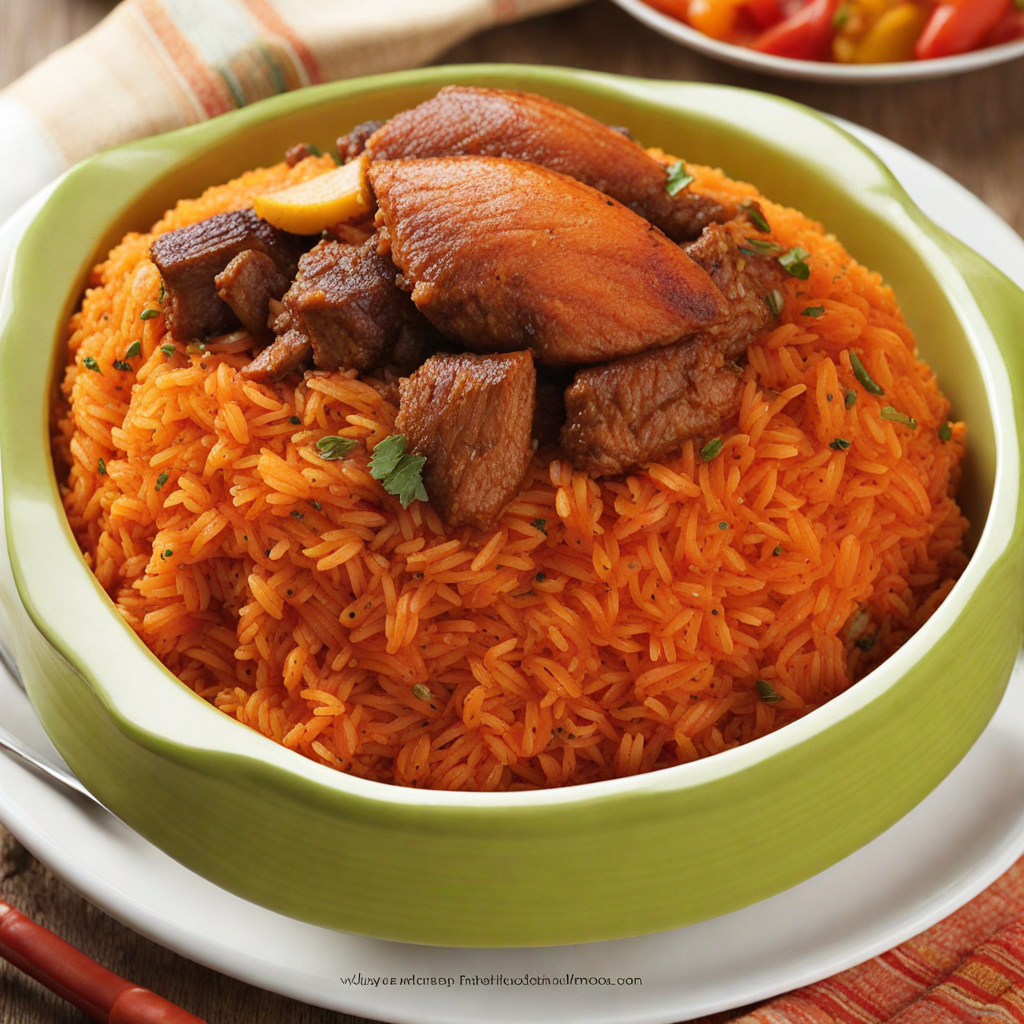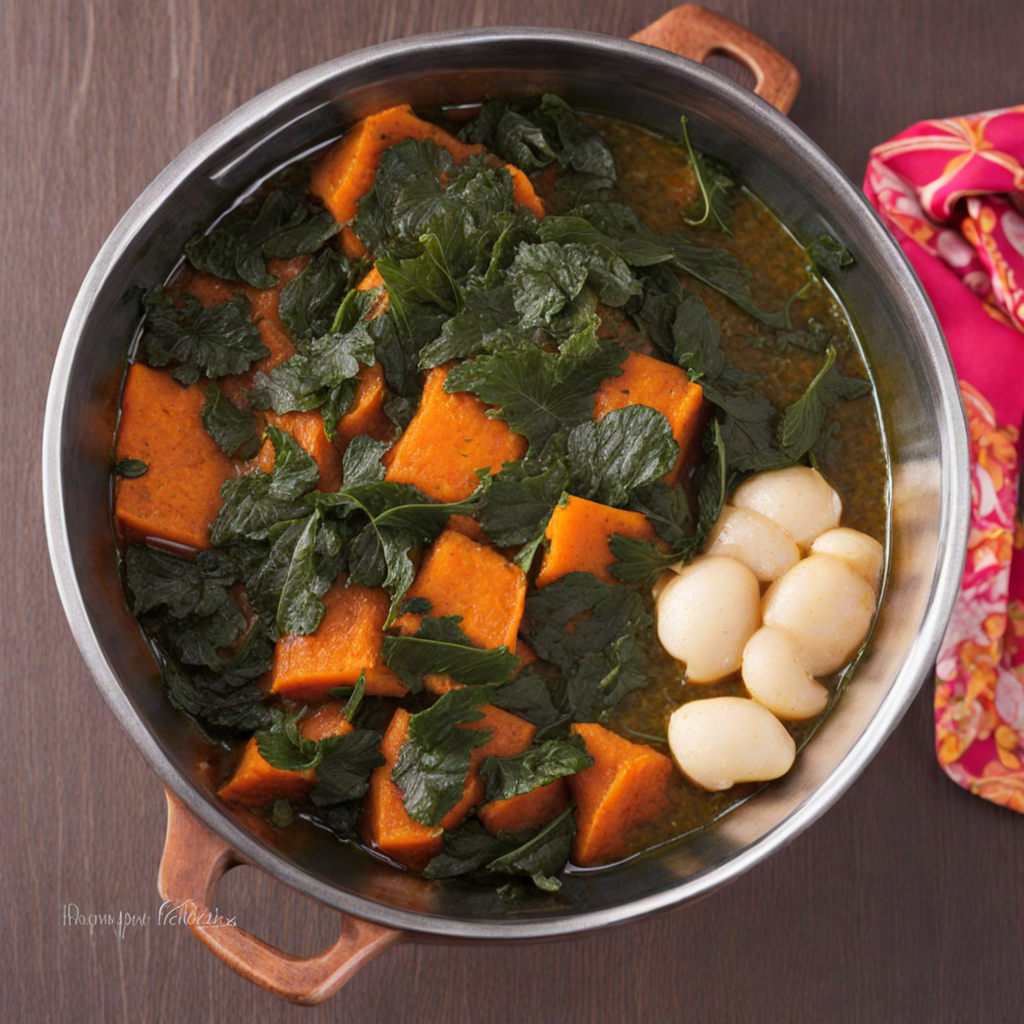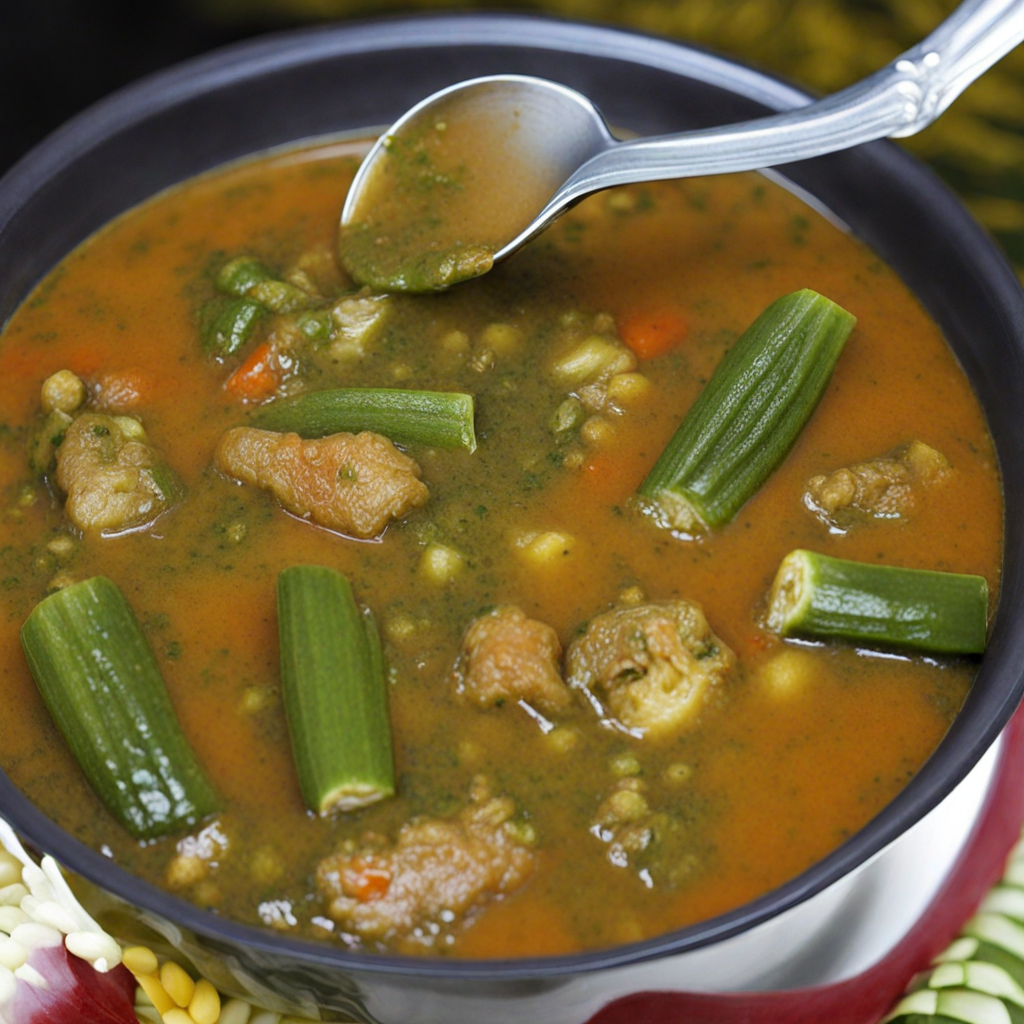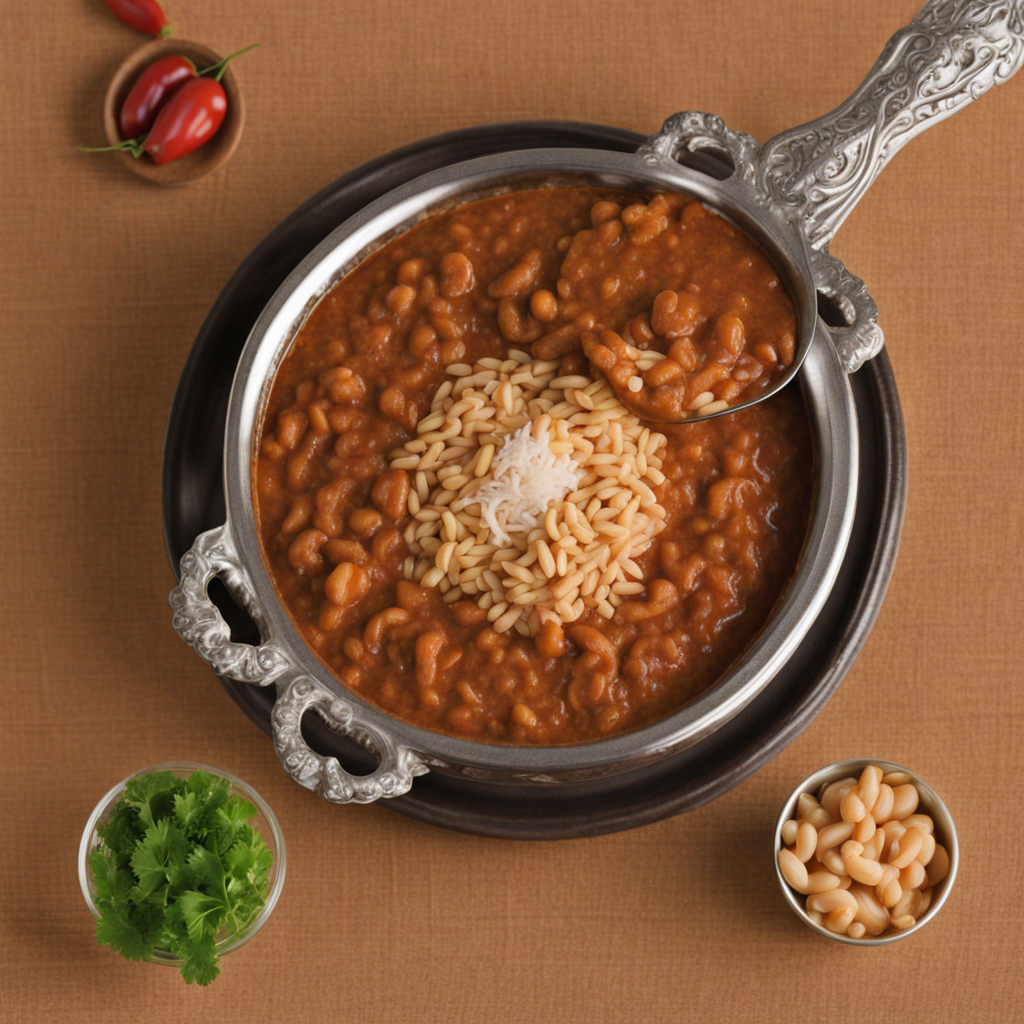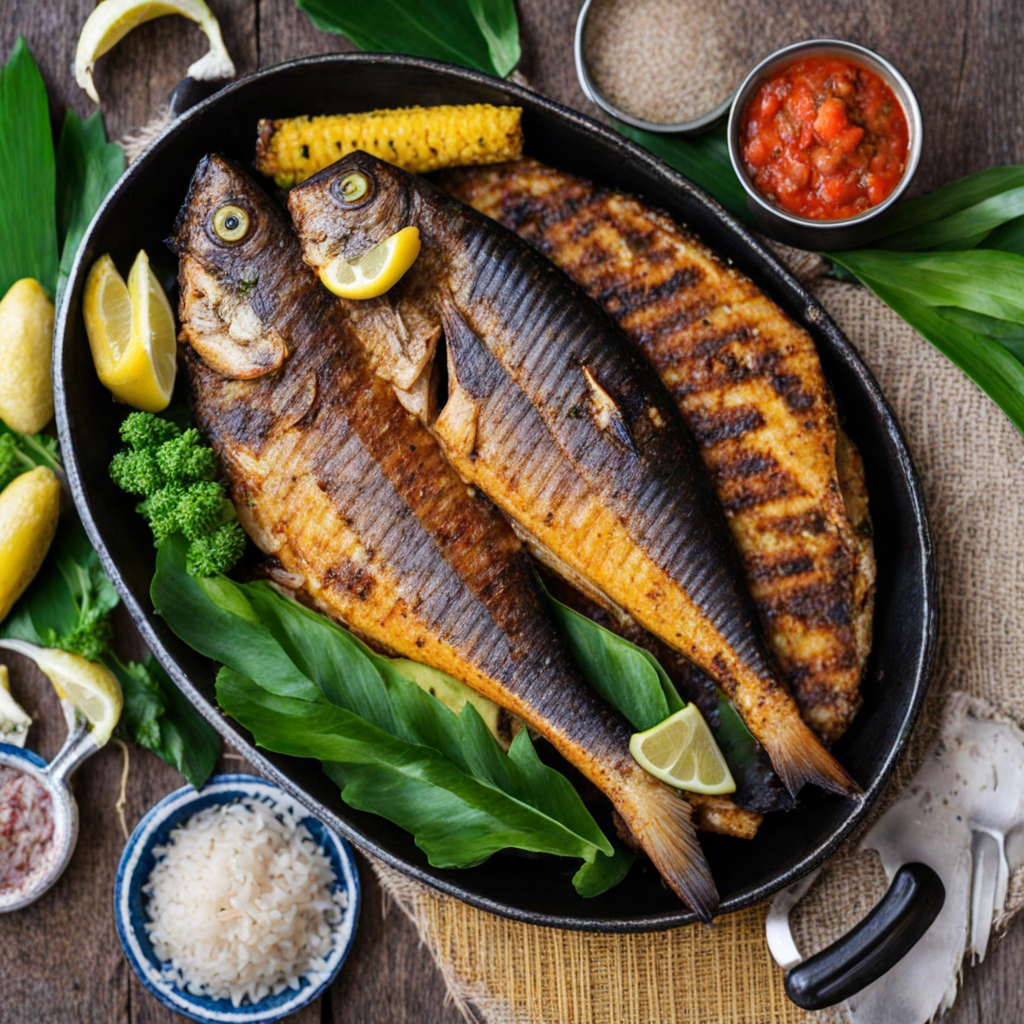Jollof Rice
Jollof Rice is a vibrant and flavorful dish that is a staple across West Africa, and the Guinean version is particularly renowned for its unique blend of spices and ingredients. At its core, Jollof Rice consists of long-grain rice cooked in a rich tomato sauce, infused with aromatic herbs and spices that create a warm and inviting aroma. The dish often features a medley of ingredients, including bell peppers, onions, and garlic, which are blended into a smooth paste that forms the base of the sauce. This combination not only adds depth of flavor but also gives the rice its signature reddish hue, making it a visually appealing dish as well. In Guinea, Jollof Rice is often accompanied by an assortment of proteins, such as grilled chicken, beef, or fish, which are marinated in spices and cooked to perfection. The rice absorbs the flavors from the proteins and the sauce, creating a harmonious dish that is both hearty and satisfying. The inclusion of vegetables like carrots and peas adds a pop of color and enhances the nutritional value of the meal. The dish is typically served at celebrations and gatherings, embodying a sense of community and shared experience, as it is often enjoyed with family and friends. The experience of tasting Jollof Rice is a delightful journey of flavors and textures. Each bite offers a perfect balance of savory, spicy, and slightly sweet notes, with the rice being fluffy and well-cooked. The dish is usually enjoyed with a side of fried plantains or a fresh salad, complementing the rich flavors of the rice. For those seeking to explore new culinary horizons, Jollof Rice from Guinea promises to be an unforgettable addition to your palate, showcasing the vibrant and diverse nature of West African cuisine.
How It Became This Dish
The History of Riz au Gras: A Culinary Jewel of Guinea #### Origins of Riz au Gras Riz au Gras, a beloved dish in Guinea, is a vibrant rice dish that exemplifies the rich agricultural bounty and culinary traditions of West Africa. Its name translates to "rice with sauce," which aptly describes its main components: fluffy rice accompanied by a flavorful sauce made from a medley of ingredients such as vegetables, meat, and spices. The origins of Riz au Gras can be traced back to the agricultural practices of the Mandinka and Fulani people, two of the prominent ethnic groups in Guinea. Rice cultivation has a long history in West Africa, with the crop being introduced to the region over a thousand years ago, possibly from Southeast Asia. The favorable climate of Guinea, with its lush soil and abundant rainfall, made it an ideal location for rice farming. As rice became a staple food, innovative cooking methods and flavor combinations emerged, giving rise to dishes like Riz au Gras. #### Cultural Significance Riz au Gras is more than just a meal; it is a symbol of hospitality and community in Guinean culture. Traditionally, this dish is prepared for special occasions such as weddings, family gatherings, and religious ceremonies. The act of cooking and sharing Riz au Gras brings people together, reinforcing social bonds and celebrating communal ties. It is often served during important festivities like Eid, where families come together to commemorate the end of Ramadan. In Guinea, food is deeply intertwined with cultural identity, and Riz au Gras holds a special place in this narrative. The dish reflects the diverse influences that shape Guinean cuisine, including indigenous practices, Islamic traditions, and the legacies of colonialism. The use of local ingredients, such as palm oil, okra, and a variety of spices, showcases the unique flavors of the region while also highlighting the adaptability of Guinean cooks. #### Ingredients and Preparation The preparation of Riz au Gras typically begins with the selection of high-quality rice, often the fragrant varieties that are well-suited to absorb the flavors of the sauce. The sauce itself is the heart of the dish and can vary significantly based on regional preferences, seasonal ingredients, and individual family recipes. Common ingredients in the sauce include chicken, beef, or fish, along with a colorful array of vegetables such as carrots, bell peppers, and onions. The preparation method usually involves sautéing the meat and vegetables in palm oil or vegetable oil, allowing the natural flavors to meld. Spices such as garlic, ginger, and various local seasonings are added to enhance the depth of flavor. Once the sauce is prepared, it is combined with the rice, allowing the grains to soak up the rich, savory liquid. The dish is then served warm, often accompanied by spicy condiments or salads, providing a delightful contrast to the richness of the Riz au Gras. #### Development Over Time As Guinea has evolved over the centuries, so too has Riz au Gras. The dish has absorbed influences from various culinary traditions, leading to a dynamic evolution in its preparation and presentation. During the colonial period, interactions with European settlers introduced new ingredients and cooking techniques, which were incorporated into traditional recipes. For example, the introduction of tomatoes and bell peppers, which were not indigenous to West Africa, has transformed the flavor profile of Riz au Gras, making it even more vibrant and appealing. In recent decades, globalization and migration have further influenced the dish. The Guinean diaspora, particularly in places like France, the United States, and other parts of Europe, has adapted Riz au Gras to suit the availability of ingredients while keeping the essence of the dish intact. These adaptations often reflect the fusion of Guinean flavors with those of other cultures, showcasing the versatility and resilience of this signature dish. #### Modern Variations and Global Recognition Today, Riz au Gras is celebrated not only in Guinea but also in neighboring West African countries, where it may be known by different names or have slight variations. In Senegal, for example, a similar dish called "Thieboudienne" features rice served with fish and a rich vegetable sauce. This interconnectedness of culinary traditions across the region highlights the shared heritage and communal values that food embodies. In the global culinary landscape, Riz au Gras has gained recognition as a representative of West African cuisine. Food enthusiasts and chefs around the world are increasingly exploring traditional dishes, leading to a resurgence of interest in the culinary practices of Guinea and its neighbors. Festivals, cultural showcases, and cooking classes have emerged to promote the richness of Guinean cuisine, allowing new generations to discover and appreciate dishes like Riz au Gras. #### Conclusion Riz au Gras is a dish that encapsulates the essence of Guinea’s cultural heritage, agricultural richness, and communal spirit. Its journey from humble rice fields to tables around the world showcases the adaptability and creativity of Guinean cooks throughout history. As the world becomes more connected, the appreciation for traditional dishes like Riz au Gras continues to grow, ensuring that this culinary jewel remains a cherished part of Guinea's identity for generations to come. In a world where food serves as a bridge between cultures, Riz au Gras stands as a testament to the enduring significance of culinary traditions, uniting people through the shared experience of enjoying a meal steeped in history, flavor, and love.
You may like
Discover local flavors from Guinea



